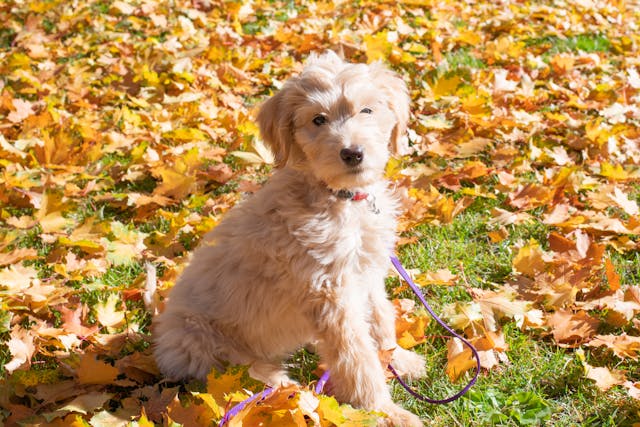Preparing Your Home for a New Labradoodle Puppy is very adorable journey. Bringing a Labradoodle into your life is more than just an exciting journey — it’s a commitment to creating a safe, loving space where your new puppy can grow, thrive, and become a happy, well-adjusted companion.When I brought home my first furry friend, the joy was unmatched, but so was the need for thorough preparation. I remember standing in my living room, checklist in hand, imagining every corner from a puppy’s perspective. The process of puppy-proofing felt like baby-proofing, only fuzzier.
Small items were tucked away, cords secured, and soft bedding arranged to build a nurturing environment where the little one could feel at ease. It wasn’t just about making space — it was about making that space welcoming, full of warmth and comfort.This guide is your step-by-step friend, offering practical tips drawn from experience. A guide like this would have saved me hours of planning and second-guessing. From the very first moment of your pup’s arrival, everything you do shapes their world. The right transition isn’t automatic; it’s built through mindful effort.
Creating that ideal space isn’t just about items—it’s about the feeling of adventure, the excitement in the air, and knowing you’ve thought of every detail to help your adult dog become their best self. Whether it’s their friendly energy or intelligent eyes, your Labradoodle will sense the love in every corner you’ve prepared just for them.
Table of Contents

Preparing Your Home for a New Labradoodle Puppy
Preparing for a Labradoodle puppy involves setting up a safe, comfortable environment. Before bringing your new pup home, make sure you have essentials like a crate, food and water bowls, comfortable bedding, and toys to keep them entertained. Labradoodles are social and energetic, so create a designated play and training area in your home. Also, puppy-proof your home by removing hazards like electrical cords, toxic plants, and small objects that could be ingested.
Understanding Labradoodle Needs
When I welcomed my first Labradoodle, I quickly learned that truly knowing their background matters. These dogs are a hybrid of the Poodle and Labrador Retriever, and each one brings a special mix of traits. Whether your pup is an F1 (first-generation) or F1b (backcross), their needs don’t differ much. They’re full of energy, deeply affectionate, and need lots of space to move around. I noticed early on that their hypoallergenic coat was a bonus for my allergies, but their grooming routines could definitely vary depending on the generation. Understanding this helped me better plan for daily care.
A suitable environment starts with providing proper nutrition, regular socialization, and room for play. These are the basic things every Labradoodle needs to feel secure and balanced. Their routines might be similar, but you’ll need to observe your dog’s habits to fine-tune your approach. I made small changes at home, like creating play zones and setting a feeding schedule. These steps made a huge difference. When you make time to truly understand your dog’s nature, you’re not just preparing your home — you’re shaping their future.
Puppy-Proofing Your Home Creating a Safe Place
When bringing a new Labradoodle puppy into your home, it’s crucial to puppy-proof every area to make sure your little explorer stays safe. Here’s how you can create a safe and welcoming environment:
1. Remove Small Objects
- Coins, buttons, and small toys can easily be swallowed by puppies, so make sure to pick them up and keep them out of reach.
2. Secure Electrical Cords
- Use cord covers or tape the cords to baseboards to prevent your puppy from chewing on them.
3. Create a Designated Safe Zone
- Set up a specific area for your puppy, including a comfortable bed, food and water bowls, and some toys.
- A crate can be helpful for house training and providing a secure space.
4. Remove or Secure Hazardous Items
- Remove any toxic plants or small items that could be harmful if chewed or swallowed.
- Store chemicals, cleaning supplies, and medications out of reach to avoid accidents.
5. Use Baby Gates for Safety
- Block off areas with baby gates, such as stairs or rooms with potential hazards.
6. Check Your Yard
- Inspect your fencing for gaps where your puppy might escape.
- Remove any harmful plants or substances in the yard to ensure a safe outdoor space for play.
7. Cover Trash Cans
- Use lidded trash cans to keep your puppy from accessing garbage and other dangerous items.
By following these steps, you’ll create a safe environment for your Labradoodle to explore and grow. Puppy-proofing is an essential part of preparing your home for a new furry friend.

Gathering Essential Supplies for Your Labradoodle Puppy
Before your new Labradoodle puppy arrives, make sure you have all the essential supplies ready. Start with high-quality puppy food that’s specially made for Labradoodle puppies, and make sure to get food and water bowls that are sturdy and non-slip. You’ll also need a comfortable bed and a crate that’s the right size for your puppy. This crate will be important for both training and safe confinement when you’re not around to supervise. Don’t forget to pick up an adjustable collar and a sturdy leash for daily walks and training sessions.
Your new puppy will need some extra items too. Grab some chew toys and interactive toys to help with teething and to keep your puppy entertained. Make sure to stock up on grooming supplies, including brushes, combs, nail clippers, and dog-friendly shampoo. Training pads and cleaning supplies are also a must for any potty training accidents. With all these supplies, you’ll be able to create a comfortable and safe environment where your Labradoodle can thrive.
Creating a Solid Routine for Your Puppy
When you bring your new Labradoodle puppy home, establishing a consistent routine is essential. This helps your puppy feel secure and understand what to expect. Begin by creating a daily schedule that includes regular feeding times—usually 3 to 4 times a day—along with frequent potty breaks after meals, naps, and playtime. Incorporate play sessions to keep your puppy active and mentally stimulated. Also, set aside time for training sessions, focusing on positive reinforcement to help your puppy learn quickly. As you move forward, make sure to stick to the routine, as puppies thrive on consistency, and it will help them settle into their new home more comfortably.
Along with feeding and potty routines, don’t forget to consider sleep. Establish a bedtime ritual and provide a crate for your puppy to have a safe, cozy space to sleep. Potty training is a priority, so keep a schedule and create a designated potty area for your puppy. This will help them learn quickly where they should go. As your puppy grows, adjust the routine accordingly, ensuring it continues to meet their needs for exercise, rest, and mental stimulation.
Preparing for Training and Socialization
When preparing your new Labradoodle puppy, puppy training should be one of your first priorities. Start by enrolling them in puppy classes, which offer great socialization opportunities and a structured environment for teaching basic commands like sit, stay, come, and leave it. It’s important to use positive reinforcement, such as treats, praise, and play, to encourage good behavior. Exposing your puppy to new environments, people, and animals in a controlled and positive manner will help build their confidence and prevent fearfulness as they grow. Remember, crate training can also be helpful for both house training and creating a safe, comfortable space for your puppy when unsupervised.
As you begin, make sure to introduce handling early—get them used to being touched, having their paws, ears, and mouth examined. This will help your puppy become comfortable with regular grooming and vet visits. Start leash training by introducing the collar and getting them accustomed to walking on a leash. Consistency is key when it comes to puppy training. Gradually expose your puppy to new experiences and socialization events, such as playdates and outdoor adventures. This will ensure they become well-adjusted adults, prepared to handle new challenges without stress or behavioral issues.

Preparing for Your Puppy’s Health/First Vet Visit
When you bring your new Labradoodle puppy home, schedule their first vet visit within a few days. It’s important to choose a vet who has experience with Labradoodles and can help guide you in your puppy’s early health journey. Gather information such as any health records from the breeder and make sure to prepare questions for your vet about your puppy’s care. During the visit, don’t forget to discuss vaccinations and set up a vaccination schedule to protect your puppy from preventable diseases. Also, talk about preventive care like flea, tick, and heartworm prevention, which are essential to keeping your Labradoodle healthy.
Regular visits to the vet are crucial for maintaining your puppy’s well-being. By keeping a record of all treatments and vet visits, you’ll stay organized and ensure your puppy gets the right care. Start building a relationship with your vet so that you feel comfortable asking questions about puppy care, exercise, and diet. Make sure to also puppy-proof your home by securing things like electrical cords, removing toxic plants, and making sure small objects are out of reach to create a safe environment for your puppy.
How to House Train a Labradoodle Puppy
House training a Labradoodle puppy requires patience, consistency, and a routine. Start by taking your puppy outside frequently, especially after meals, naps, and play sessions. Establish a designated potty area and use positive reinforcement like treats and praise when they do their business outside. Crate training can also be helpful to encourage your puppy to hold it until they are let outside. Always be patient, as accidents are normal, but with consistent training, your Labradoodle will quickly learn.
Can a Labradoodle Be Left Alone for 8 Hours?
Labradoodles are social dogs and thrive on interaction, so leaving them alone for 8 hours is not ideal, especially when they are puppies. If you must be away for long hours, consider arranging for a dog sitter or a friend to help. You can also set up a safe area with toys and a comfortable crate to ensure they have everything they need. Gradually increase the time they spend alone to help prevent separation anxiety.

When Should a Labradoodle Puppy Get Its First Haircut?
A Labradoodle’s first haircut typically happens when they are around 6 months old. However, some puppies may need a trim earlier depending on their coat’s growth. Labradoodles have a non-shedding coat that can become long and curly, so regular grooming is essential. A professional groomer can help with the first haircut to get your puppy accustomed to the grooming process. Afterward, regular trims every 6-8 weeks will keep your Labradoodle’s coat healthy and manageable.
These are general guidelines, but every puppy is different, so it’s important to tailor your care based on your Labradoodle’s personality and needs.
Preparing Your Labradoodle’s Coat for Winter 9 Effective Methods
Toy Labradoodle Breed Complete Info, Pics and Fact 2025

